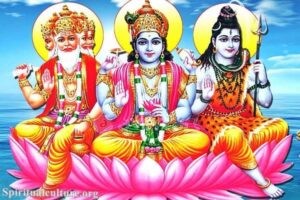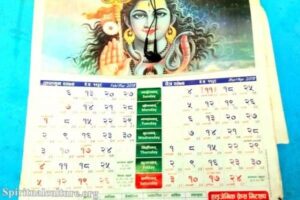In the rhythm of daily life, amidst the chaos and calm, human beings have always yearned for a tangible way to connect with the Divine. In Hinduism, puja (pronounced poo-jah) is that sacred bridge — a ritual of offering, gratitude, and communion. Whether performed quietly in a family shrine or elaborately in a grand temple, puja is not merely a religious duty; it is a spiritual conversation, a moment where the eternal and the earthly meet.
As Spiritual Culture, we invite you to journey through the meaning, beauty, and deep symbolism of puja. In this article, we will explore what puja is, how it is practiced at home and in temples, and why it remains a central pillar in Hindu life. Through sacred texts, cultural insights, and spiritual reflection, we’ll unfold how this timeless act of worship nurtures the soul, sanctifies space, and brings the seeker closer to the sacred.
The Meaning of Puja in Hindu Tradition
Worship as Connection
The word puja in Sanskrit means reverence, honor, and adoration. It is a multifaceted practice that integrates body, mind, and spirit in the act of worship. At its core, puja is an offering to a deity — a gesture of love, surrender, and communication.
According to the Bhagavad Gita (9:26):
“Whoever offers to Me with devotion a leaf, a flower, fruit, or water, I accept that loving offering from the pure-hearted.”
This verse encapsulates the heart of puja: it is not the value of the offering, but the devotion behind it that matters most.
More Than a Ritual
While puja is a ritual act, it is not mechanical. Every movement, chant, and gesture is filled with symbolic depth and intention. From lighting a lamp to offering flowers, each act represents a dialogue with the Divine, expressing gratitude, seeking guidance, or simply acknowledging the sacred presence in life.
Types of Puja: Daily, Occasional, and Festival Worship
Nitya Puja – The Daily Worship
Most devout Hindus perform a form of nitya puja, or daily worship, at home. This usually takes place at a small altar or shrine in the home, where family members begin the day with a few moments of spiritual connection. Offerings may include incense, water, flowers, rice, or fruits.
This daily practice keeps the mind anchored, reminding the worshipper of their higher purpose and divine connection even amidst everyday life.
Naimittika Puja – Occasional or Special Rituals
These are pujas performed for specific reasons or on certain auspicious occasions — such as birthdays, anniversaries, or rites of passage. They may also be conducted to mark life transitions, from childbirth to housewarming ceremonies.
Kamya Puja – Desire-Based Worship
Some pujas are conducted to fulfill a specific wish or intention — for health, success, marriage, or protection. These are called kamya pujas, and while they may be desire-driven, they are still rooted in the recognition of divine will.
Utsava Puja – Festival Celebrations
During festivals such as Diwali, Navaratri, Ganesh Chaturthi, or Krishna Janmashtami, puja becomes a community celebration. In temples and homes alike, these festivals involve elaborate rituals, music, dance, and devotion, transforming everyday spaces into portals of the sacred.
Puja at Home: A Personal and Intimate Offering
The Home Shrine
In many Hindu households, a special corner or room is dedicated as a home shrine, often with images or statues (murtis) of deities like Lakshmi, Ganesha, Shiva, or Krishna. This space becomes a personal temple — a place of prayer, silence, and sanctity.
Daily puja at home may be simple, but it is powerful. Lighting a lamp, offering water, chanting a mantra, or simply bowing in silence — these gestures create sacred continuity within the family’s daily rhythm.
Family and Generational Bonds
Home puja also serves to transmit spiritual values across generations. Children watch and participate, learning not just the form of worship, but the spirit of reverence and humility. Through puja, the home becomes more than a dwelling — it becomes a living sanctuary.
Puja in the Temple: The Public Face of Worship
Murti and Darshan
In temples, puja is conducted by priests who have been specially trained in ritual purity, Sanskrit chants, and traditional customs. The central act is often the worship of the murti, or deity-image, which is not seen as a mere idol, but as a vessel of divine presence.
Hindus do not worship the stone or metal itself — they worship the Divine who dwells in and through it. The act of darshan — seeing and being seen by the deity — is one of the most spiritually potent moments during temple puja.
Ritual Structure of Temple Puja
A typical temple puja may include:
- Avahana (invocation): inviting the deity into the space
- Abhisheka (bathing): ritual cleansing of the murti with milk, water, honey, etc.
- Alankara (adorning): dressing the deity with flowers, jewels, and clothes
- Naivedya (offering food): presenting fruits, sweets, and meals
- Aarti (waving of light): symbolizing the removal of darkness and ignorance
Each act is performed with mantras and gestures that align the physical and spiritual realms.
The Symbolism Behind Puja Offerings
Light (Deepa)
Lighting a lamp signifies the illumination of inner wisdom and the removal of ignorance. It reminds the worshipper of the divine light that dwells within.
Flowers (Pushpa)
Flowers symbolize purity and impermanence — beauty offered before it fades. They are a reminder to live with sincerity and humility.
Water (Jala)
Water purifies, sustains, and cleanses. Offering water symbolizes the offering of one’s life breath and emotions in surrender to the Divine.
Food (Naivedya)
The food offered during puja reflects the idea that all nourishment ultimately comes from the Divine — and is returned to it in gratitude.
Sound (Mantra and Bell)
Mantras create a vibrational connection between human consciousness and divine presence. The ringing of the bell awakens the senses and invites divine attention.
The Inner Puja: Worship of the Heart
Beyond Ritual, Into Relationship
While external puja involves offerings and rituals, inner puja — manasa puja — is performed within the heart. One imagines each offering mentally, visualizing each step with devotion. This is especially practiced by yogis and renunciants who may not have access to physical implements.
As the Narada Bhakti Sutras teach:
“True devotion is uninterrupted and unconditional love for God.”
Thus, puja becomes not just an act, but a state of being — a way of living in constant awareness of the sacred.
Why Puja Matters in Modern Life
Anchoring the Soul Amidst Busyness
In an age of screens, schedules, and speed, puja offers a daily pause, a return to silence and intention. It reminds us that life is not just survival or success, but sanctity.
Creating Sacred Space at Home
Even a small corner for puja can transform the energy of a home. It becomes a spiritual anchor, offering peace, clarity, and a sense of divine companionship through life’s joys and storms.
Reclaiming Ritual as Meaningful Practice
Modern seekers sometimes dismiss ritual as outdated — but puja, when understood and practiced mindfully, is not superstition. It is embodied prayer, rich in meaning and spiritual psychology. It engages the senses, the heart, and the mind — drawing all parts of the self toward the sacred.
Reflect and Reimagine
Puja is more than a tradition — it is a living expression of love, reverence, and longing for the Divine. Whether done alone in a quiet room or amidst hundreds in a temple hall, it whispers to the soul: you are not alone, you are seen, and you are loved.
In offering light, we awaken light within. In bowing down, we rise spiritually. In giving to the Divine, we receive the grace to live more fully, more humbly, and more joyfully.
What about you?
Could creating a daily moment of sacred connection bring more meaning to your day?
Could lighting a small lamp each morning become a reminder of your deeper self?
Spiritual Culture invites you to explore puja not just as a ritual, but as a relationship — a living bond between the soul and the Sacred.


